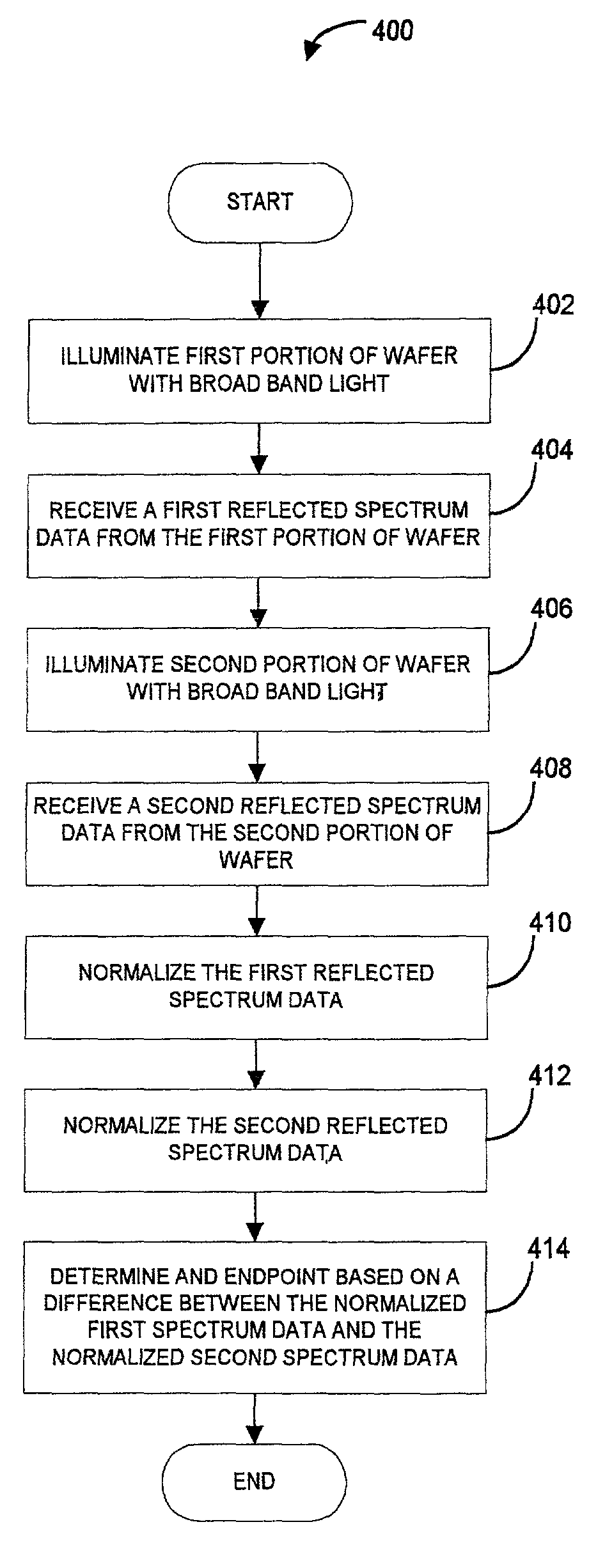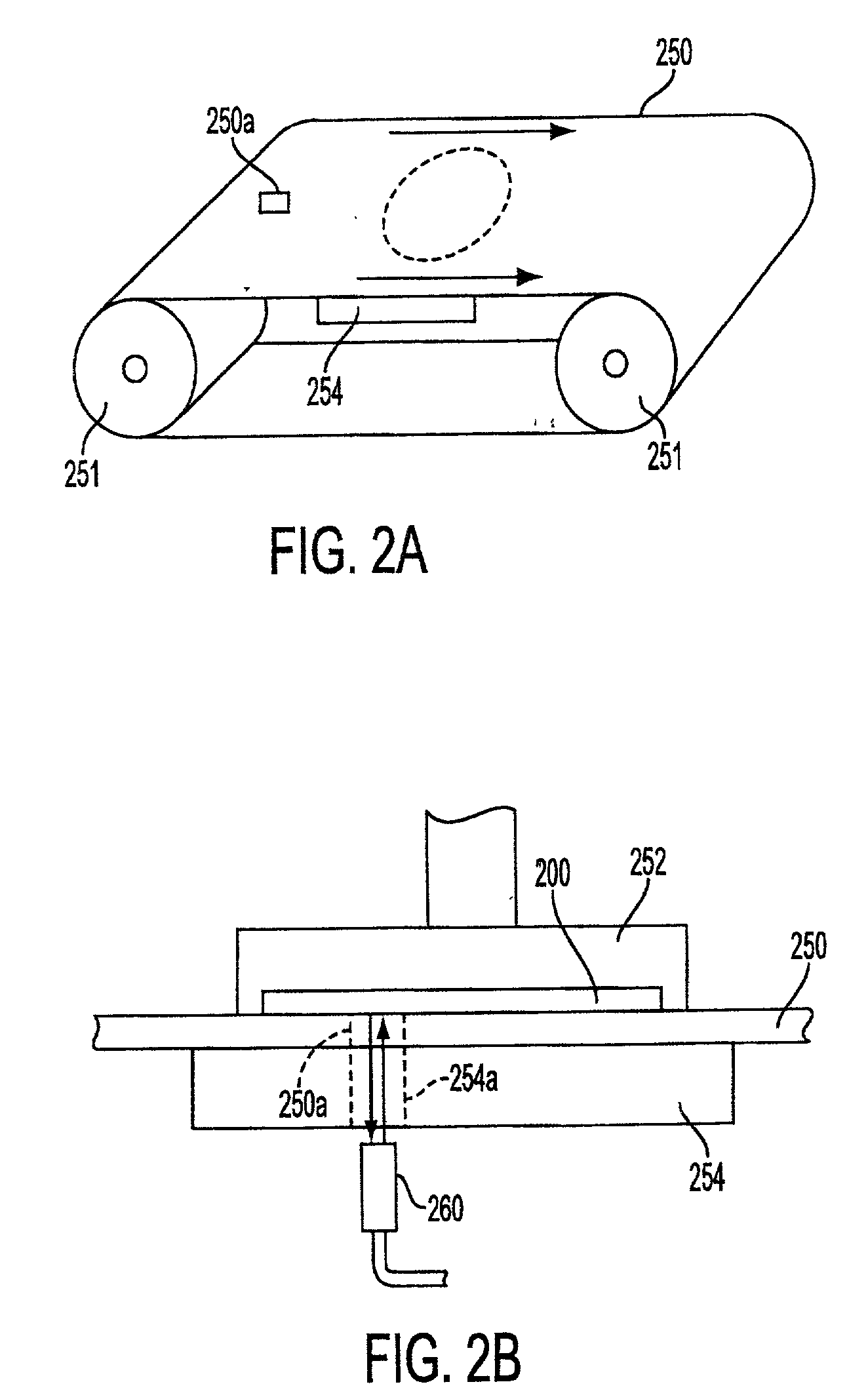System and method of broad band optical end point detection for film change indication
a broad band, end point technology, applied in the field of endpoint detection, can solve the problems of copper not being able to successfully polish copper, excessive diffusion barrier and metallization material, and affecting the production efficiency of additional metallization layers
- Summary
- Abstract
- Description
- Claims
- Application Information
AI Technical Summary
Problems solved by technology
Method used
Image
Examples
Embodiment Construction
[0046] Several exemplary embodiments for optically determining an endpoint will now be described. It will be apparent to those skilled in the art that the present invention may be practiced without some or all of the specific details set forth herein.
[0047] An important control aspect of the chemical mechanical polishing (CMP) system is determining when the process is at an end, i.e., when to stop the CMP process. Prior art systems described above, typically predict and endpoint based on various detected data points but cannot accurately detect an exact endpoint as will be described in more detail below.
[0048] FIG. 2A shows a CMP system in which a pad 250 is designed to rotate around rollers 251, in accordance with an embodiment of the present invention. A platen 254 is positioned under the pad 250 to provide a surface onto which a wafer will be applied using a carrier 252. Endpoint detection is performed using an optical detector 260 in which light is applied through the platen 254...
PUM
 Login to View More
Login to View More Abstract
Description
Claims
Application Information
 Login to View More
Login to View More - R&D
- Intellectual Property
- Life Sciences
- Materials
- Tech Scout
- Unparalleled Data Quality
- Higher Quality Content
- 60% Fewer Hallucinations
Browse by: Latest US Patents, China's latest patents, Technical Efficacy Thesaurus, Application Domain, Technology Topic, Popular Technical Reports.
© 2025 PatSnap. All rights reserved.Legal|Privacy policy|Modern Slavery Act Transparency Statement|Sitemap|About US| Contact US: help@patsnap.com



